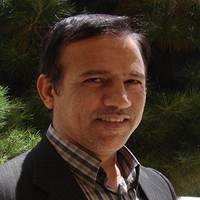Providing a Framework for Human Resource Management in Free Zone Organizations with Meta-Synthesis Approach
The multi-dimensional nature of free zone organizations and their main objective of attracting foreign investment, as a crucial requirement for the country's economic development, necessitate the utilization of capable, dynamic, and stable human resources. However, to date, there has been a lack of specific human resource management models tailored for free zone organizations. Among the various factors contributing to the failure of free zone organizations in achieving their defined goals, human resource policies, which often emulate traditional organizational practices, have been overlooked. Therefore, the aim of this study is to provide a human resource management framework specifically designed for free zone organizations.
This applied research follows a mixed (qualitative-quantitative) approach and employs meta-synthesis technique. The research methodology consists of two phases. In the first phase, a qualitative meta-synthesis approach is used to identify the categories, concepts, and codes of the human resource management model. After ensuring its validity and reliability, an initial conceptual model is developed. A total of 10,500 relevant research materials from the years 1970 to 2020, including articles, books, conference papers, and reputable scientific databases, are collected. Out of these, 10,372 items are excluded, and 128 items are analyzed. In the second phase, a survey method and a questionnaire tool are employed to determine the human resource management model of free zone organizations. The study population for this phase is comprised of human resource experts from free zone organizations and university professors familiar with the subject matter. The Aras Free Zone Organization serves as the case study.
Based on the meta-synthesis findings, the research model consists of 5 dimensions, 13 components, and 84 indicators. The results from the quantitative method confirm the five dimensions of the model while introducing modifications to the concepts and codes obtained from the meta-synthesis. The second phase explores the requirements and consequences within each dimension based on relevant data collected through interviews and observations from human resource managers in the Aras Free Zone Organization. Ultimately, the study identifies five dimensions: human resource needs planning, recruitment and selection, employment, development and improvement, and maintenance, which form the framework for human resource management in free zone organizations.
The results of this study provide recommendations for human resource management in free zone organizations and suggest avenues for future research. By employing this framework, free zone organizations can effectively and professionally manage their human resources, thereby reaping its benefits.
- حق عضویت دریافتی صرف حمایت از نشریات عضو و نگهداری، تکمیل و توسعه مگیران میشود.
- پرداخت حق اشتراک و دانلود مقالات اجازه بازنشر آن در سایر رسانههای چاپی و دیجیتال را به کاربر نمیدهد.



